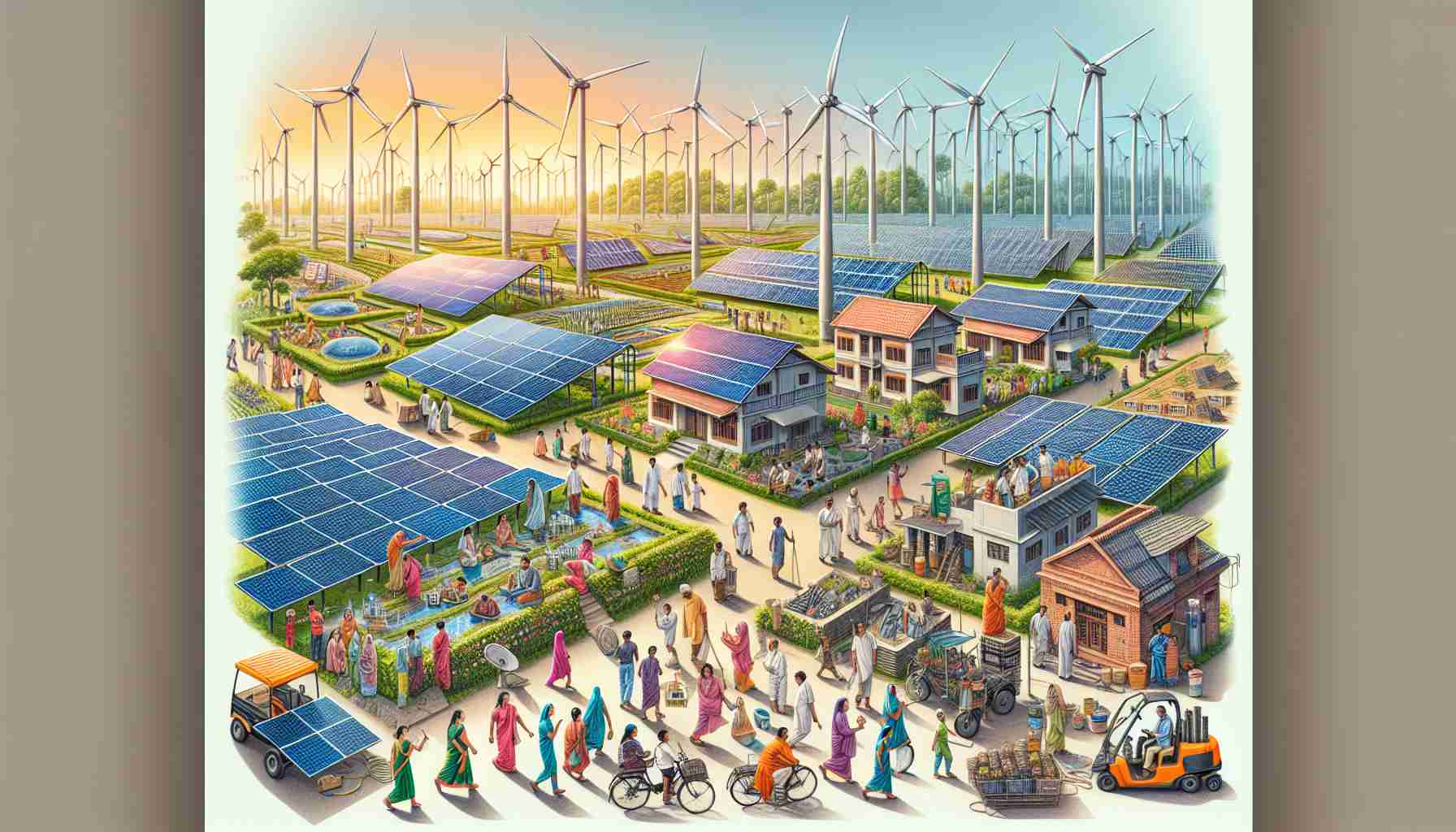
The Adani Group faces legal challenges in the United States, yet India’s clean energy goals remain on track, according to industry leaders. With ambitions to generate 500 gigawatts from renewable sources by 2032, India is not expected to waver from its commitment, given the impressive growth in its clean energy infrastructure over the past decade.
Industry experts note that Adani’s contribution, predicted to be around 10% of India’s renewable capacity, may see temporary delays due to these legal issues. The International Energy Agency highlights India’s rapid pace in expanding renewable energy, achieving a five-fold increase in its clean energy capacity, now accounting for 45% of the nation’s total power generation.
Despite these legal hurdles, Gautam Adani’s commitment to investing $100 billion in the nation’s energy transition remains firm. The conglomerate’s green energy division is currently India’s largest renewable energy producer, with ambitious plans to reach 50 GW by 2030, centered around the expansive Khavda facility in Gujarat.
However, the legal troubles have already resulted in significant financial repercussions; Adani Green Energy recently canceled a $600 million bond offering following the indictment. Major credit rating agencies have also adjusted their outlook on Adani Group entities, which could hinder their ability to secure future financing.
Competition in the sector may benefit as some analysts suggest that Adani’s financial constraints could divert investment towards other renewable energy players in India, ensuring the market remains strong amid evolving dynamics.
Adani Group’s Legal Woes: Implications for India’s Clean Energy Future
India’s commitment to achieving its renewable energy goals remains steadfast, even as the Adani Group faces legal challenges in the United States. Experts assert that the nation’s ambitious target of generating 500 gigawatts from renewable sources by 2032 is still on track, evidenced by significant growth in clean energy infrastructure over the last decade.
Current State of India’s Renewable Energy Sector
The International Energy Agency (IEA) recently reported a remarkable five-fold increase in India’s clean energy capacity, which now constitutes 45% of the total power generation in the country. This growth underscores India’s dedication to transitioning to renewable sources despite the challenges posed by high-profile legal disputes involving major players like the Adani Group.
Adani Group’s Impact and Commitments
While the Adani Group is projected to contribute about 10% to India’s renewable capacity, industry experts note that temporary delays may arise due to the ongoing legal issues. Gautam Adani remains committed to an ambitious investment of $100 billion aimed at facilitating India’s energy transition.
The Adani Green Energy division holds the title of India’s largest renewable energy producer. With plans to achieve 50 gigawatts by 2030, their operations are notably concentrated at the expansive Khavda facility in Gujarat. However, tensions surrounding the group’s legal struggles have sourced considerable consequences, as evidenced by the recent cancellation of a $600 million bond offering following an indictment against the group.
Financial Repercussions and Future Outlook
Adani Group’s financial standing has faced scrutiny, leading major credit rating agencies to revise their outlook on the conglomerate’s entities. This shift may hinder their future financing abilities, directing more investments to alternative renewable energy players in India. Analysts suggest that such a diversion could inadvertently strengthen competition within the industry, which is crucial as India continues its push towards sustainability.
Use Cases of Renewable Energy in India
India’s diverse implementation of renewable energy technologies has created several key use cases:
– Solar Farms: Large-scale solar power plants contribute significantly to power generation in both rural and urban settings.
– Wind Energy: The coastal regions of India are being harnessed for wind farms that generate substantial power.
– Hybrid Solutions: The combination of solar and wind energy technologies is optimizing power output and efficiency.
Limitations and Innovations
Despite the progress, certain limitations persist:
– Infrastructure Challenges: Developing countries must overcome logistical hurdles in energy storage and distribution to maximize renewable energy potential.
– Investment Gaps: Legal challenges may dampen private investments, necessitating government support to maintain momentum.
However, innovations in technologies such as energy storage systems and smart grids are paving the way for a more resilient renewable energy landscape.
Conclusion: The Road Ahead for India’s Clean Energy
As the legal challenges surrounding the Adani Group unfold, India’s clean energy sector appears resilient, with a strong commitment to meet its renewable energy ambitions. The shifting dynamics among investment flows may also open avenues for other renewable players to thrive. This creates an optimistic prognosis for the future as India endeavors to solidify its position as a leader in renewable energy on the global stage.
For more in-depth insights about renewable energy in India, visit IEA.



